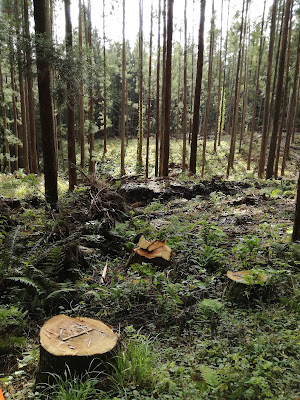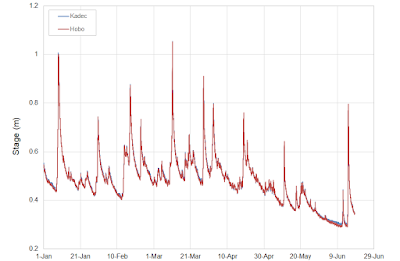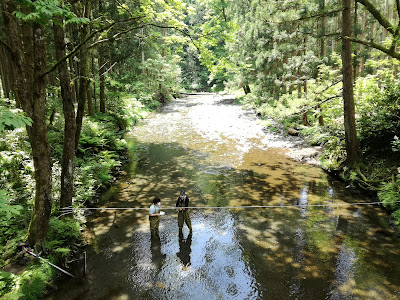Before the winter season we always download the stage data from both the Kadec logger and the Hobo logger, and of course take a discharge measurement. Recent stage data from the Kadec logger plotted below shows two moderate peaks during November. The lower stage hydrograph compares the two logger systems for the second half of 2020. It seems there is greater discrepancy between them since October, with the Kadec data showing more noise during flow recession periods.
| Recently thinned stand of cedar located very close to the gauged cross-section |

































